Related Research Articles
The Canadian Expeditionary Force (CEF) was the expeditionary field force of Canada during the First World War. It was formed on August 15, 1914 following Britain’s declaration of war on the German Empire, with an initial strength of one infantry division. The division subsequently fought at Ypres on the Western Front, with a newly raised second division reinforcing the committed units to form the Canadian Corps. The CEF and corps was eventually expanded to four infantry divisions, which were all committed to the fighting in France and Belgium along the Western Front. A fifth division was partially raised in 1917, but was broken up in 1918 and used as reinforcements following heavy casualties.

The Royal Hamilton Light Infantry (Wentworth Regiment) (RHLI) is a Primary Reserve infantry regiment of the Canadian Army, based at John Weir Foote VC Armoury in Hamilton, Ontario. The RHLI is part of 31 Canadian Brigade Group, which is part of 4th Canadian Division.
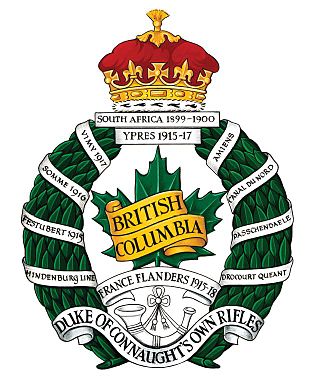
The British Columbia Regiment (Duke of Connaught's Own) is a Primary Reserve armoured reconnaissance (recce) regiment of the Canadian Army; the regiment is subordinate to 39 Canadian Brigade Group of the 3rd Canadian Division. Established in 1883, it is the oldest military unit in Vancouver, British Columbia, Canada. It parades at the Beatty Street Drill Hall at the corner of Dunsmuir and Beatty in Downtown Vancouver. The regiment has been variously designated as garrison artillery, rifles, infantry, and armoured, but has been reconnaissance since 1965. It has received 41 battle honours in its history, and has been a unit of the Royal Canadian Armoured Corps since 1942.
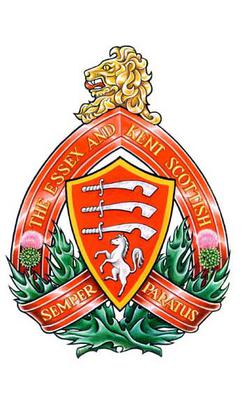
The Essex and Kent Scottish is a Primary Reserve infantry regiment of the Canadian Army.

The Seaforth Highlanders of Canada is a Primary Reserve infantry regiment of the Canadian Army based in Vancouver, British Columbia. The regiment is subordinate to 39 Canadian Brigade Group, 3rd Canadian Division. Based at the Seaforth Armoury on Burrard Street in Vancouver, the regiment serves in both times of war and civil emergency, such as disaster relief after earthquakes or floods. It also contributes individual volunteers or "augmentees" to Canadian Forces operations around the world.
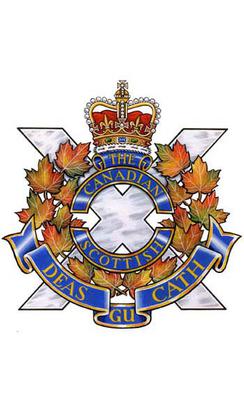
The Canadian Scottish Regiment (Princess Mary's) is a Primary Reserve infantry regiment of the Canadian Army based on Vancouver Island in British Columbia.
The 172nd Battalion, CEF was a unit in the Canadian Expeditionary Force during the First World War. Based in Kamloops, British Columbia, the unit began recruiting during the winter of 1915/16 in Kamloops and district. After sailing to England in October 1916, the battalion was absorbed into the 24th Reserve Battalion on January 1, 1917. The 172nd Battalion, CEF had one Officer Commanding: Lieut-Col. J. R. Vicars.
The 121st Battalion, CEF was a unit in the Canadian Expeditionary Force during the First World War. Based in New Westminster, British Columbia, the unit was authorized on 22 December 1915 and began recruiting in that city. After sailing to England on RMS Empress of Britain in August 1916, the battalion was absorbed into the 16th Reserve Battalion on January 10, 1917. The 121st Battalion, CEF had one Officer Commanding: Lieutenant-Colonel Archibald Woodbury McLelan.
The 131st Battalion, CEF was a unit in the Canadian Expeditionary Force during the First World War. Based in New Westminster, British Columbia, the unit began recruiting in late 1915 in that city. After sailing to England in November 1916, the battalion was absorbed into the 30th Battalion, CEF on November 14, 1916. The 131st Battalion, CEF had one Officer Commanding: Lieut-Col. James Davis Taylor.
The 143rd Battalion, CEF was a unit in the Canadian Expeditionary Force during the First World War. Based in Victoria, British Columbia, the unit began recruiting in 1916 throughout Western Canada. Bantam units were organized to recruit men who were shorter than the standard 5-foot-4-inch (163 cm) height required for joining the army. By the time they were fully formed, however, only about half of the men were under that standard height as they could not find enough short men to enlist.
The 152nd Battalion, CEF, was a unit of the Canadian Expeditionary Force during the Great War. It was authorized on 22 December 1915, recruiting in Weyburn and Estevan, Saskatchewan, and embarked for Great Britain on 3 October 1916, where its personnel were absorbed by the 32nd Reserve Battalion, CEF, on 21 October 1916 to provide reinforcements for the Canadian Corps in the field. The battalion was disbanded on 21 May 1917.
The 158th Battalion, CEF was a unit in the Canadian Expeditionary Force during the First World War. Based in Vancouver, British Columbia, the unit began recruiting in late 1915 in that city. After sailing to England in November 1916, the battalion was absorbed into the 1st Reserve Battalion on January 6, 1917. The 158th Battalion, CEF had one Officer Commanding: Lieut-Col. C. Milne.
The 212th Battalion, CEF was a unit in the Canadian Expeditionary Force during the First World War. Based in Winnipeg, Manitoba, the unit began recruiting in early 1916 throughout the province. The battalion was disbanded while still in Canada and the men transferred to the 97th Battalion, CEF. The 212th Battalion, CEF had one Officer Commanding: Lieut-Col. E. C. Pitman.
The 218th Battalion, CEF, was a unit in the Canadian Expeditionary Force during the First World War. Based in Edmonton, Alberta, the unit began recruiting in early 1916 in that city.
The 237th Battalion, CEF was a unit in the Canadian Expeditionary Force during the First World War. Based in Sussex, New Brunswick, the unit began recruiting in the Spring of 1916 in Military Districts 4, 5, 6, and 7 and was one of several "American" battalions in the CEF. The unit was disbanded while still in Canada and its men transferred to the 97th Battalion, CEF. The 237th Battalion, CEF had one Officer Commanding: Lieut-Col. C. S. Bullock.
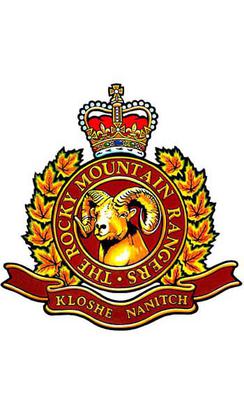
The Rocky Mountain Rangers is a Primary Reserve infantry regiment of the Canadian Army, one of only four infantry regiments in British Columbia, and the only infantry unit that recruits in Northern BC and much of the Interior. The regimental headquarters are at JR Vicars Armoury in Kamloops, with an additional rifle company in Prince George. The Rocky Mountain Rangers are part of the 3rd Canadian Division's 39 Canadian Brigade Group, the brigade responsible for Canadian Army organization in British Columbia.
211th may refer to:

The 2nd Canadian Mounted Rifles Battalion, was authorized on 7 November 1914 as the 2nd Regiment, Canadian Mounted Rifles, CEF. The battalion recruited in Victoria and Vernon, British Columbia, and was mobilized in Victoria. An earlier incarnation was raised for Boer War.
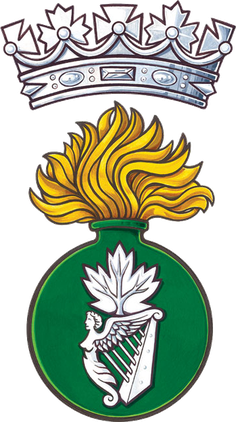
The Irish Fusiliers of Canada (The Vancouver Regiment) was an infantry regiment of the Canadian Army. It was placed on the Supplementary Order of Battle in 1965. In 2002, it was taken off the Supplementary Order of Battle and amalgamated with The British Columbia Regiment (Duke of Connaught's Own).
The 97th Battalion, CEF, was an infantry battalion of the Great War Canadian Expeditionary Force. The 97th Battalion was authorized on 22 December 1915 and embarked for Britain in May 1916, but was halted in Aldershot, Nova Scotia when the American government protested the title of ‘American Legion,’ as the country was officially a neutral state. The delay caused a number of officers to resign, and a number of men deserted when it became clear they would not enter the front lines. Finally the designation ‘American Legion’ was dropped and the unit could proceed overseas. 31 officers and 798 other ranks boaded the RMS Olympic on 19 September 1916. The next month 270 men were absorbed by the Depots of The Royal Canadian Regiment, CEF and the rest, 428 soldiers, joined the Princess Patricia's Canadian Light Infantry, also, to provide reinforcements for the Canadian Corps in the field.
References
- Meek, John F. Over the Top! The Canadian Infantry in the First World War. Orangeville, Ont.: The Author, 1971.